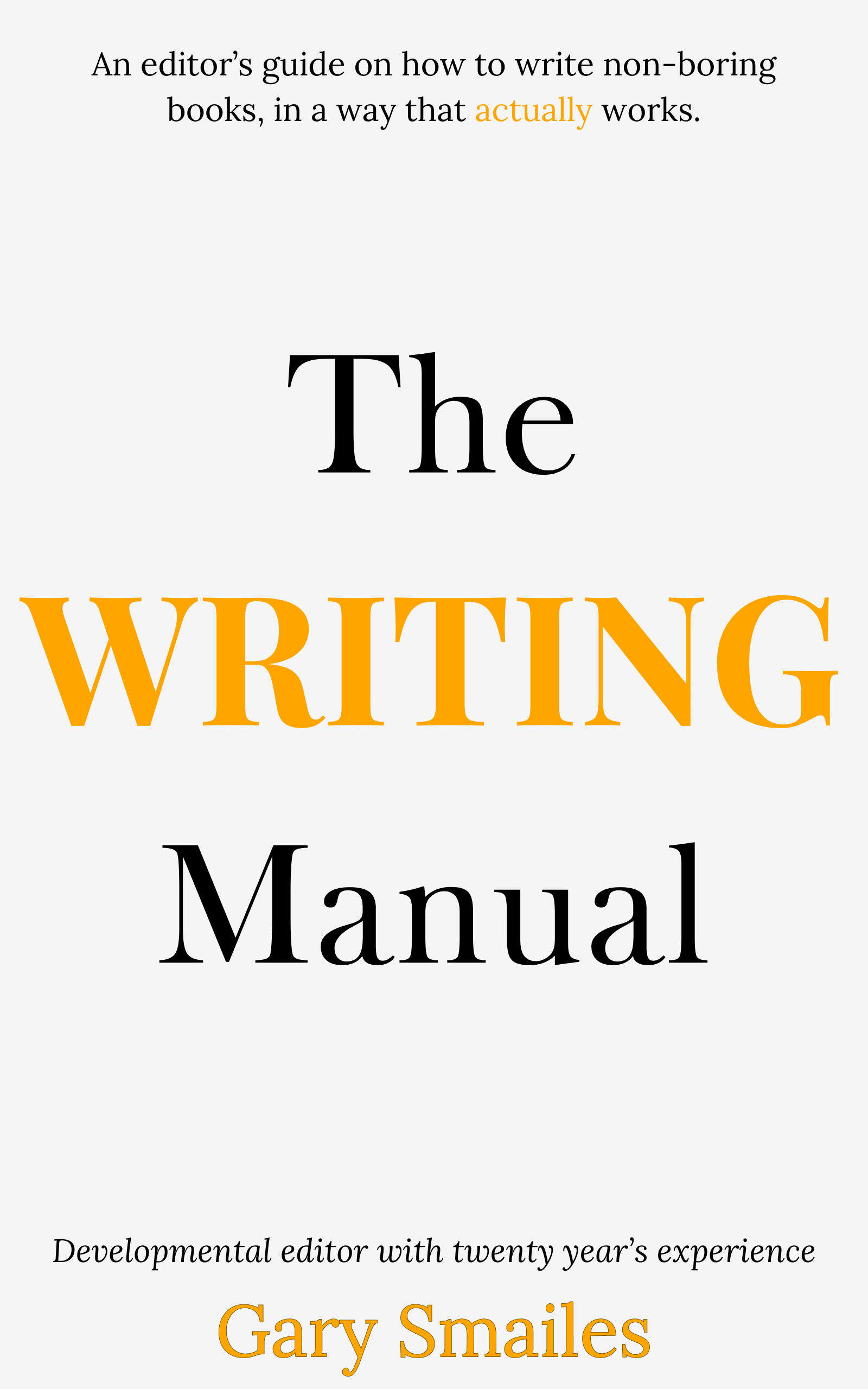



Editing is a critical step in the publishing process, transforming a raw manuscript into a polished, reader-ready book. Whether you're a first-time author or a seasoned writer, understanding the various types of editing can help you choose the right kind of support for your work. From refining the plot and character development to checking for grammatical errors, each type of editing plays a unique role in enhancing your manuscript.
In this post, we'll explore the different types of book editing, shedding light on what each entails and how it can benefit your writing. Whether you're looking to strengthen your story structure or ensure your prose is error-free, knowing what to expect from each editing stage can make all the difference. Ready to learn more? Let's dive into the world of book editing and discover the essential steps to perfecting your manuscript.
For more general information about editing, check out the Wikipedia page on editing.
Table of Contents
Developmental editing, also known as substantive or structural editing, focuses on the big picture of your manuscript. This type of editing is typically done early in the writing process and addresses the overall structure, content, and narrative flow. The goal is to enhance the story's core elements, ensuring that the plot is engaging, the characters are well-developed, and the pacing keeps readers hooked.
Key areas of focus in developmental editing include:
Developmental editing is highly beneficial for authors as it helps them see their manuscript from a reader's perspective. By addressing major issues early on, writers can save time and effort in later stages of editing. This collaborative process often involves detailed feedback and suggestions, guiding authors in refining their work to its fullest potential.
Line editing focuses on the sentence and paragraph level, refining the language to enhance clarity, style, and overall readability. Unlike copy editing, which primarily addresses grammatical correctness, line editing delves into the artistry of writing, ensuring that each sentence flows smoothly and effectively communicates the author's intent.
Key elements addressed in line editing include:
Line editing can transform a manuscript by polishing the language, making it more compelling and enjoyable for readers. This type of editing is especially valuable for authors looking to refine their writing style and ensure that their voice shines through.
Examples of line editing might include reworking awkward or overly complex sentences, eliminating redundancy, and ensuring that the tone remains consistent throughout the manuscript. This meticulous process can significantly elevate the quality of the writing, making it more engaging and resonant.
Copy editing is a crucial step in the editing process that focuses on correcting grammar, punctuation, spelling, and other language errors. Unlike line editing, which enhances the flow and style of the writing, copy editing ensures that the manuscript adheres to standard language conventions and is free of technical mistakes.
Key areas addressed in copy editing include:
Copy editing also involves checking for factual accuracy and consistency within the manuscript. This includes verifying the accuracy of dates, names, and other details, as well as ensuring that the manuscript follows a consistent style guide. Whether it's a novel, a non-fiction book, or a technical document, copy editing is essential for producing a polished and professional final product.
For more information on copy editing, you can refer to this Wikipedia article on copy editing.
Proofreading is the final step in the editing process, focusing on identifying and correcting any remaining errors in the manuscript. This includes minor mistakes in spelling, punctuation, grammar, and formatting that may have been overlooked during previous editing stages. The goal of proofreading is to ensure that the text is clean, error-free, and ready for publication.
Key tasks involved in proofreading include:
Proofreading is distinct from other types of editing because it does not involve making substantial changes to the content or structure of the manuscript. Instead, it serves as a final quality check to ensure that the text is polished and professional. This meticulous attention to detail helps to create a positive impression on readers and reduces the risk of errors in the published work.
For further details on proofreading, you can visit this Wikipedia article on proofreading.
Specialized editing refers to the type of editing that focuses on specific genres or types of content, requiring editors with particular expertise in those areas. This can range from academic editing to technical editing, each with its unique requirements and conventions. Specialized editors bring their deep knowledge and understanding of the subject matter, ensuring that the manuscript not only adheres to general editing standards but also meets the specific needs of its genre or field.
Some common types of specialized editing include:
Specialized editing is essential for works that require a high level of subject-specific knowledge. Editors in these fields not only correct language errors but also check for content accuracy, appropriate terminology, and adherence to industry standards. This attention to detail helps maintain the integrity and professionalism of the work, ensuring it meets the expectations of its intended audience.
Selecting the appropriate type of editing for your manuscript can be a crucial decision in the publishing process. The right choice depends on the current stage of your manuscript and what you aim to achieve with the editing process. Here are some guidelines to help you determine which type of editing is best suited for your needs:
Developmental Editing: If you are in the early stages of writing or if your manuscript needs significant structural changes, developmental editing is the way to go. This type of editing helps refine the overall structure, plot, and character development, making sure that the foundation of your story is solid.
Content Editing: Once the major structural elements are in place, content editing can help fine-tune the consistency, accuracy, and logical flow of your manuscript. This is ideal if you need to ensure that all the details align and the narrative flows smoothly.
Line Editing: If your manuscript's structure and content are already strong, but you want to enhance the language and style, line editing is the right choice. This type of editing focuses on sentence-level improvements to make the prose more engaging and effective.
Copy Editing: For manuscripts that are almost ready for publication, copy editing is essential to catch any grammatical, punctuation, and spelling errors. This ensures that the text adheres to standard language conventions and is free of technical mistakes.
Proofreading: As the final step, proofreading is necessary to catch any remaining errors and ensure that the manuscript is polished and ready for publication. This type of editing is ideal for a final quality check.
Specialized Editing: If your manuscript belongs to a specific genre or field, such as academic, technical, or medical, specialized editing is crucial. Editors with expertise in these areas can ensure that the content meets the specific standards and conventions of the genre.
Choosing the right type of editing depends on the specific needs of your manuscript and where it stands in the writing process. By understanding the different types of editing and their purposes, you can make an informed decision that will help elevate the quality of your work.
Self-editing is a critical step in the writing process that allows authors to refine their work before submitting it to professional editors. By taking the time to review and improve their own manuscripts, writers can address many common issues, making the subsequent editing stages more focused and efficient.
Key benefits of self-editing include:
Effective self-editing involves several strategies:
While self-editing is an important step, it is not a substitute for professional editing. Professional editors bring a level of expertise and objectivity that authors may not possess, helping to elevate the manuscript to its highest potential. However, thorough self-editing can significantly enhance the quality of the manuscript, making it a valuable part of the writing process.
Learn more with our in-depth guide to self-editing.
The different types of editing in a book include developmental editing, content editing, line editing, copy editing, proofreading, and specialized editing.
The six levels of editing are developmental editing, content editing, line editing, copy editing, proofreading, and specialized editing.
The three main types of edits are developmental editing, copy editing, and proofreading.
The methods of editing include reading aloud, using editing tools, taking breaks for a fresh perspective, and seeking feedback from beta readers or writing groups.
The 7 C's of editing are clarity, coherence, consistency, correctness, conciseness, completeness, and credibility.
The five basic stages of editing are developmental editing, content editing, line editing, copy editing, and proofreading.
Editing is a multifaceted process that plays a vital role in transforming a manuscript into a polished and professional piece of work. From the initial stages of developmental editing to the final touch of proofreading, each type of editing serves a unique purpose in enhancing the quality and readability of the text. Understanding the different types of editing and their specific functions can help authors make informed decisions about the best approach for their manuscripts.
By taking the time to self-edit and then seeking the expertise of professional editors, writers can ensure that their work meets the highest standards of excellence. Whether it’s refining the structure, perfecting the language, or ensuring accuracy in specialized content, the collaborative effort between authors and editors is essential for creating a compelling and error-free manuscript.
For more information on the editing process and how to choose the right type of editing for your manuscript, feel free to explore additional resources or consult with experienced editors who can guide you through each stage of your writing journey.
Happy writing and editing!

Claim your free eBook today and join over 25,000 writers who have read and benefited from this ebook.
'It is probably one of the best books on writing I've read so far.' Miz Bent